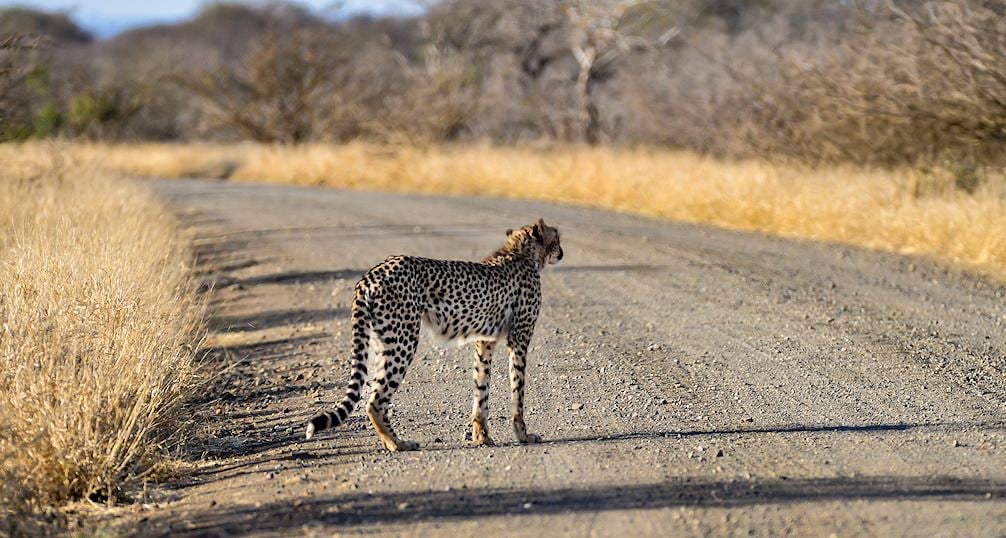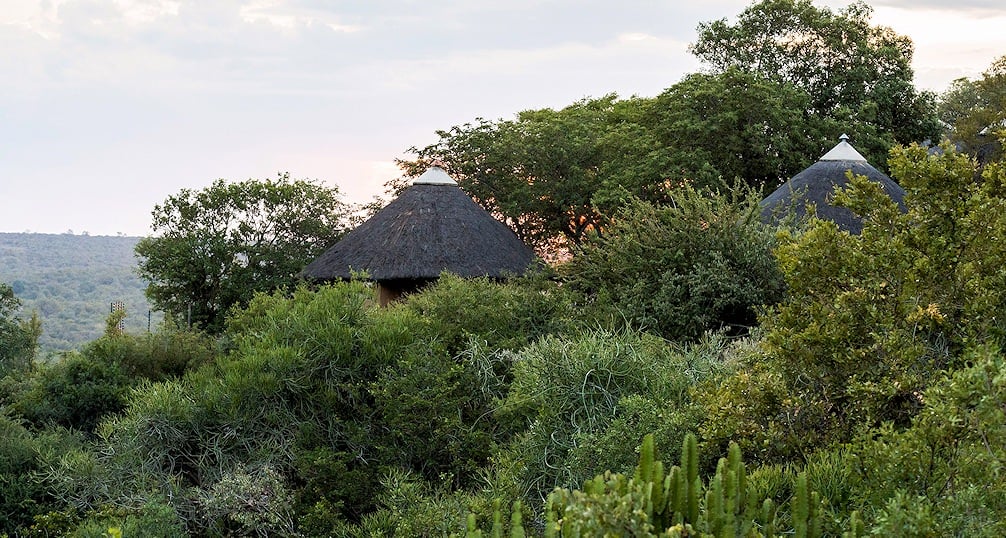Lisa's Favorite South African Destinations: Part One

Olifants Rest Camp in the Kruger Park is a special clifftop outpost with seemingly endless views of the wilderness.
The Kruger National Park certainly ranks high among any visitor’s ‘favorite’ South African destinations, but the park’s best rest camp is always up for dispute. My selection of Olifants Rest Camp as my favorite camp for a Kruger safari is, I confess, deeply rooted in nostalgia. My parents began taking us on family vacations to the park before my sister and I were even able to walk. My parents’ camps of choice at the time were Skukuza and Olifants, but Skukuza never quite captured my imagination or dug into my memories like Olifants. Skukuza’s tidy lawns, lumbering size and overall flatness made it feel too much like a town – almost suburban. Olifants, on the other hand, with its spectacular mountain perch and never-ending views, made this a magical South African safari experience.

The view. I cannot possibly say enough about the view. The winding road that leads up to the camp’s entrance gate just does not prepare you for it, and every time we pulled up at the reception my sister and I would tumble out of the vehicle and rush down to the viewing deck – we simply could not wait. Built atop a rocky outcrop, the camp overlooks a significant snag of the perennial waterway for which it is named. Whether the river is singing in full flood or flowing in a whispering trickle, the sight will leave you breathless. Sunsets are particularly magical; when the last rays bounce off the reflection of the river, it turns the whole world gold.
This captivating glow reaches all the way up to the camp and, during this time of the day, you will find most guests seated on the deck or on perimeter benches drinking it all in.
Dainty little klipspringer are regularly spotted bounding from rock to rock along the fence. Colonies of 'dassies' (rock hyrax) abound. As is the case with most of the park’s rest camps, baboons and vervet monkeys are regular raiders. I will never forget our first (and last) “oh, no” moment, stepping into our kitchenette and finding it turned upside down. Every egg had been smashed onto the floor and contributed to the congealed mess of powdered cereal, sugar and milk. ‘Someone’ had also made off with two liters of orange juice and half a dozen avocados. Lesson learned – keep the unit locked!
We would always book the same thatched rondavels on the perimeter fence. Late in the evening, when the fire had withered to embers, and after we’d had our fill of lamb chops and roasted marshmallows, we’d wait for the aardwolf. (NOTE: An aardwolf is a small nocturnal mammal related to the hyena, but almost entirely insectivorous. The literal translation from Afrikaans to English is ‘earth wolf’.) We’d turn off all the lights and sit outside on our small stoep. Even as small children, my siblings and I knew that we had to keep mum, or we wouldn’t hear his arrival. We’d wile away this quiet interval staring up at the Milky Way until the telltale rustle at the fence. My father would shine his flashlight and the beam would catch two glowing eyes low to the ground. We’d burst into silent fits of excitement. It was wonderful.
Naturally, as time passed, the aardwolf’s visits ceased. Perhaps he died. Perhaps he was forced out of his territory. So it goes. Frankly I still don’t understand why such a characteristically shy, nocturnal animal chose to grace us with his presence each night, but more than twenty years later the memory stays with me and I doubt I will ever forget him.

As outdated and simple as they were, the moss green rondavels of our early visits will always hold a special place in my heart. However, as we grew older, my parents relinquished the perimeter rondavels in favor of one of the two guest houses – whichever was available. These ‘units’ are ideal for families or close groups of friends visiting the park together. Both Lebombo and Nshawu accommodate a maximum of eight guests in four fully en suite bedrooms. Both have full, well-equipped kitchens, spacious living areas – dining room and lounge combination – and gorgeous patios with braai facilities and sprawling views across the Olifants River Valley. For the overall atmosphere and the view, however, Nshawu wins every time.
Once you get used to the space and privacy of a guest house, it really is hard to go back to a standard chalet. It genuinely feels like your own private home in the bush – complete with typical family squabbles about the TV. To, me this is the guest houses’ only downfall. The ‘luxury’ of a television with satellite channels (though limited) is largely detrimental to the Kruger safari experience and a terrible temptation. Evenings should be spent on that glorious stoep, listening to the crackle of log fire and lion roars echoing up from the valley below, and relishing the burnished silver of the night sky.
It is important to note that Olifants is not among the most modern rest camps in the Kruger National Park, nor is it located in a particularly wildlife-rich area. The Olifants River represents a rather distinctive divide between northern and southern Kruger.
Its position announces the beginning of the mopane scrub belt that sprawls northward in strikingly obvious proliferation. Elephants feast on every available morsel of this tree, from the characteristic butterfly-shaped leaves to the bark and roots. As such, regardless of what else you may see, encountering large herds of elephants is a near certainty.
Just south of Olifants you will find what is known as ‘Olifants rugged veld’. Generally speaking, after you cross the Olifants Bridge (a lovely spot where you are permitted to exit your vehicle, stretch your legs and enjoy fine views of the river) the mopane scrubveld steadily evaporates into a more broken, rocky woodland consisting of knobthorn and bush willow, which is far more accommodating for serious game viewing.
Of course, at the end of the day, much of your success is about timing and luck. Our favorite picnic site is Timbavati. It’s located south of the river some 50km from Olifants Camp. Over the years, the secondary roads that loop from the H1-4 have been particularly kind to us in terms of lion and leopard sightings. However, our most unexpected and finest sighting occurred early one morning just as we exited the camp gate en route to Timbavati. We were about 10 minutes out and hadn’t even reached the main road yet when my mother announced that we had forgotten the eggs. Annoyed that our early start had been interrupted, my father nevertheless turned around and returned to camp.
When we had reached roughly the same point where we had backtracked, we spied something long-legged and lithe walking in the road ahead of us. We approached in a crawl, and soon matched the leisurely pace of the lone cheetah. He walked so casually alongside the car, so close to it, that we could hardly believe it. He looked up, and I swear our eyes met. The best part? There wasn’t a single other vehicle in sight.

He eventually moved to the side of the road and deeper into the bush, but we could still observe him with ease. Then he opened his mouth and chirped. It was the first time I’d ever seen or heard a cheetah in the bush, and that moment was pure magic. We couldn’t imagine that it could get any better, but suddenly another cheetah appeared on the other side of the road and chirped back. We were right between them, and reversed the car to give them space. A third cheetah appeared behind us. Now, I ask you – would we have met these beautiful cats if my mother hadn’t forgotten the eggs? If we had passed that same spot a few minutes earlier?
The trio proceeded to lope down the road together, and soon other cars arrived. The typical Kruger cat traffic began to pile up, and the cheetahs chose to disperse into the bush. Nevertheless, some fifteen cars remained stationary, all passengers craning their necks to catch another glimpse. We knew we had already seen them better than anyone else had and left the scene with smug smiles.
Amazingly, after driving no more than 50 meters onward, an impala burst forth from the bush and bolted across the road, with one of the cheetahs in hot pursuit. We sat in stunned silence. Looking behind us, we realized that, once again, we’d been the only witnesses to the extraordinary moment.
This unforgettable sighting occurred in the thick of the mopane belt. My point is that, though Olifants’ position may not make it as popular as the park’s southern camps, every trip to Kruger and every game drive is unique. Staying at one camp over another does not guarantee sightings – it is not a zoo. In this wild realm where the animals still reign supreme, when it comes to sightings, us ‘visitors’ are wholly reliant on the whims of the animals. This authenticity is inherent to the beauty of a Kruger safari.
Olifants remains a largely underrated camp and enjoys somewhat of a ‘cult following’. In recent years we have begun to tend more toward Lower Sabie Rest Camp when visiting Kruger as a family. This is largely because the nearest gates – Crocodile Bridge and Paul Kruger – are a more accessible distance and my parents aren’t particularly up for long road trips anymore. Though I adore Lower Sabie, it will always play second fiddle to my childhood favorite.










